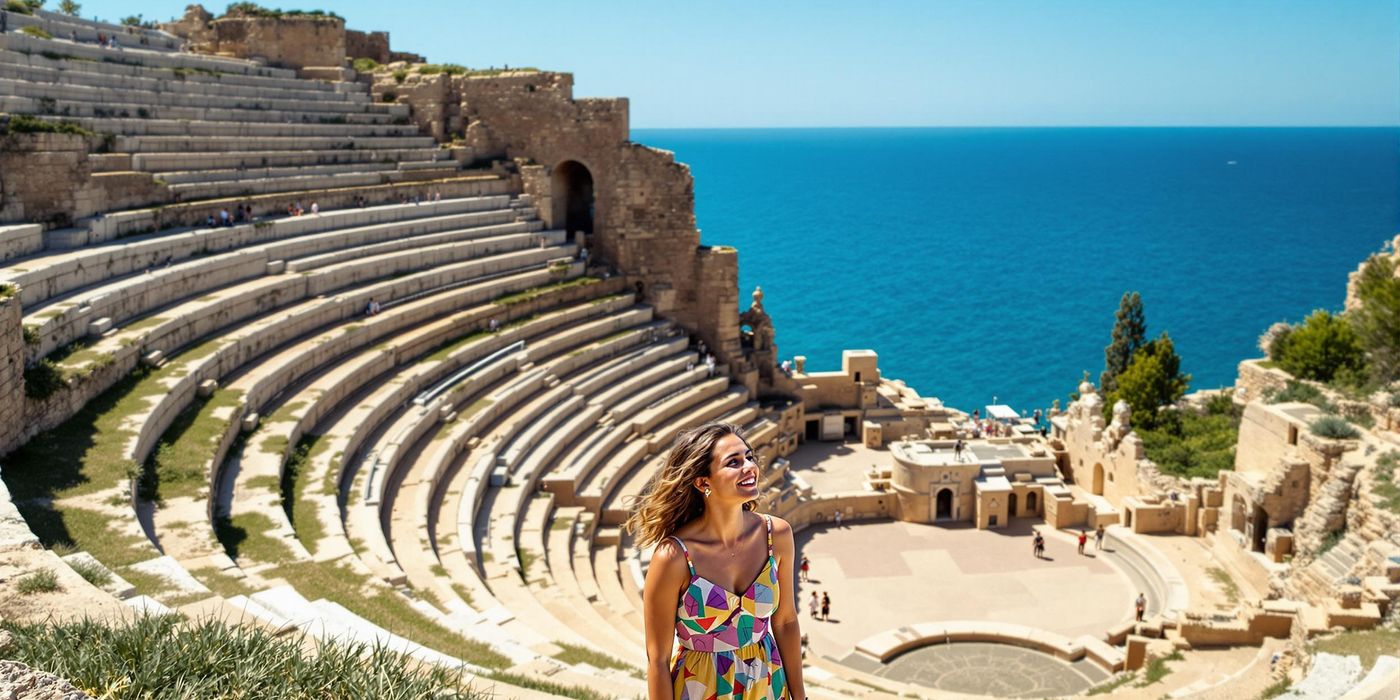As a librarian specializing in historical archives and a mother, I've always found immense joy in exploring historical sites. But let's be honest, keeping kids engaged while soaking in history can be a challenge! Over the years, I’ve learned a few tricks to transform these outings into memorable family adventures. Join me as I share my insights on making historical site visits fun, educational, and accessible for everyone.
Choosing the Right Historical Site
Selecting the perfect historical site is the first step in ensuring a successful family trip. It's crucial to consider a few key factors. Think about the ages of your children – what might fascinate a teenager could easily bore a younger child. Accessibility is also important; are there stroller-friendly paths or facilities for those with mobility issues? And of course, consider your family’s interests. Are they fascinated by ancient civilizations, medieval castles, or more recent history?
Living in Bonn, Germany, and having roots in Teruel, Spain, has given me a unique perspective on family-friendly historical sites. In Germany, the Neanderthal Museum near Düsseldorf is a fantastic option. It's not just about bones and artifacts; the museum uses interactive exhibits to bring the Neanderthals to life, making it engaging for kids of all ages. {image1} Over in Spain, the Roman ruins of Tarragona offer a glimpse into the Roman Empire with well-preserved amphitheaters and forums that are easy to explore. Sofia, my daughter, absolutely loved imagining gladiators battling in the arena!
Don't forget to tap into resources like travel blogs, historical societies, and tourism websites. These can offer invaluable insights and recommendations for hidden gems that are perfect for families.
Planning an Interactive Historical Site Visit
Once you've chosen your site, the real fun begins: planning the visit! One of my favorite strategies is to create a scavenger hunt. Before you go, research the site and devise clues related to famous figures, architectural details, or historical events. For example, at a medieval castle, a clue might be: I defended the kingdom with my mighty walls, find the tallest of them all! This keeps the kids engaged and encourages them to explore every nook and cranny.
Age-appropriate activities are also key. Look for sites that offer hands-on exhibits, guided tours designed for children, or interactive displays. Many museums now have dedicated children's areas where kids can dress up in historical costumes or participate in simulated archaeological digs. Remember to break up the visit with breaks and snacks. Even the most enthusiastic young historian can get overwhelmed, so regular pit stops are essential.
And if travel isn't possible, don't underestimate the power of virtual tours! Many renowned institutions like the Smithsonian, the British Museum, and various historical sites in Rome offer immersive virtual experiences. These can be a great way to prepare for a future visit or simply explore history from the comfort of your own home.
Incorporating Storytelling and Imagination
As a librarian, I firmly believe in the power of storytelling. Stories have a unique way of bringing history to life, especially for children. Think of the old Irish ‘shanachies,’ the traditional storytellers who kept history alive through their tales. We can emulate that!
Before or during your visit, read historical fiction together. Create imaginative scenarios – what would it have been like to live in that time period? Act out historical events using simple props. When we visited a Roman villa, Sofia and I pretended to be Roman citizens going about our daily lives, which sparked some hilarious and insightful conversations about Roman culture.
Don't forget to share personal stories or family history related to the site or time period. Perhaps your great-grandfather fought in a particular war, or your family emigrated from a country featured in the site's history. These personal connections make history more tangible and relatable.
Interactive storytelling can also be incredibly engaging. Present a historical scenario and let your children make choices about the decisions the characters will make. This not only encourages critical thinking but also helps them understand the complexities of history.
Hands-On Activities and Crafts
Hands-on activities and crafts are fantastic for reinforcing the learning experience. Before a visit to a castle, we once built a model of it using cardboard and paint. It gave Sofia a much better understanding of the castle's architecture and defensive features. {image2} Other ideas include designing a coat of arms, writing a historical newspaper article, or even trying calligraphy.
Dressing up in period costumes is another excellent way to immerse children in the historical setting. Many costume shops offer affordable rentals, or you can create your own costumes using simple materials. Imagine your child exploring a medieval castle dressed as a knight or a princess!
And let's not forget the power of food! Cooking historical recipes is a delicious way to connect with the past. Try making Roman bread, medieval stew, or a traditional Spanish tortilla. You might be surprised at how much your children enjoy learning about history through their taste buds.
Making History Relevant to Today
Finally, it's essential to connect historical events and figures to contemporary issues and themes. Discuss the lessons learned from history and how they can be applied to our own lives. For example, when visiting a site related to the civil rights movement, discuss the ongoing fight for equality and justice.
Encourage critical thinking and empathy by debating historical controversies or researching the impact of historical events on different groups of people. How did a particular event affect women, minorities, or the working class? These discussions can help children develop a more nuanced understanding of history and its complexities.
Relate historical inventions to modern-day technology to show the evolution of progress. How did the invention of the printing press revolutionize communication? How does it compare to the internet today? By drawing these connections, you can make history feel relevant and engaging for your children, fostering a lifelong love of learning.
Learn how to transform historical site visits into memorable family adventures with engaging activities and storytelling. Discover tips for making history fun, educational, and accessible for everyone.









